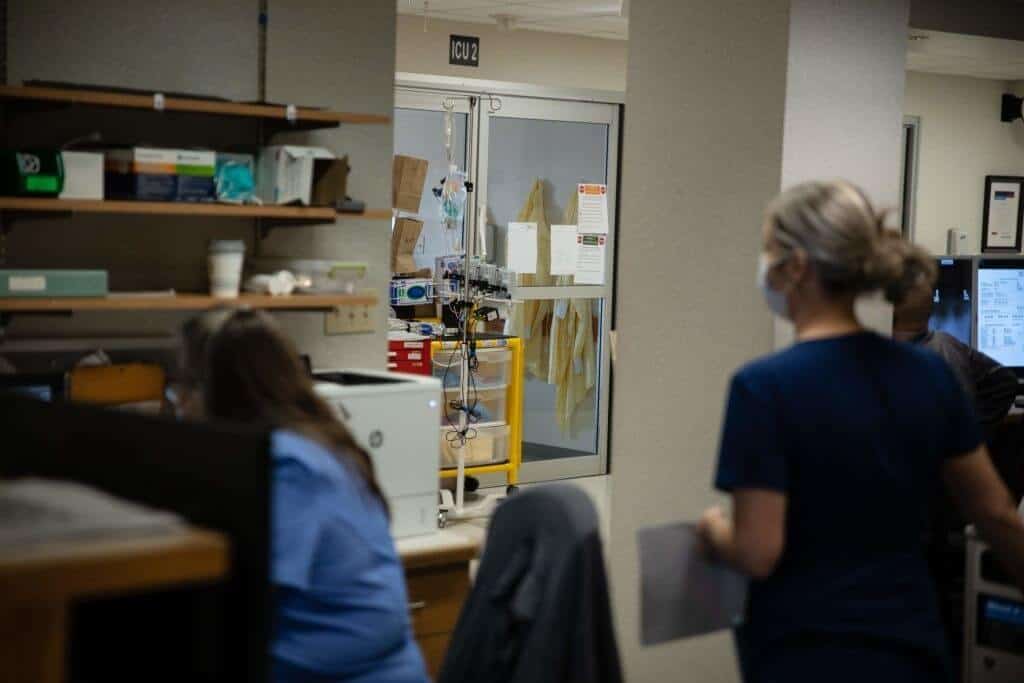How The Pandemic Destroyed A Large Number Of Rural Hospitals
Nikki Attkisson | Last Updated : August 3, 2021Almost 24 nurses are seen standing on the lawn of the rural hospital, Randolph County, Georgia. They are wearing T-shirts with a badge that reads; “Patterson Hospital 1948-2020” over their heart. On their backs, one can read the sentence; “we gave all” across a broken heart. Many of them spent almost their entire careers in the hospital their grandparents built more than 70 years ago.
How The Pandemic Destroyed A Large Number Of Rural Hospitals
Recently, the hospital got rebranded as Southwest Georgia Regional Medical Center. But many people preferred its older name. Patterson was their beloved doctor. In October, at the time when the pandemic was raging, the maintenance crew took away the hospital signs. It replaced them with a plastic banner that read in red letters; “Effective October 22, 2020 HOSPITAL CLOSED. NO EMERGENCY SERVICES ARE AVAILABLE AT THIS LOCATION. IN CASE OF EMERGENCY, CALL 911.” It was the only hospital in the County. That too closed down when the pandemic is at its highest.

During the closing ceremony, the hospital staff and nurses wore matching T-shirts. All of them had the sad sentence that read; “we gave all.”
In April, during the initial stages of the pandemic, Randolph County had the highest number of new coronavirus infections in the State. From now, the closest hospital is a 30-minute away across the State Line, in Alabama.
The day was the toughest in the County’s history, the mayor of the town said. This is one among the 19 such rural healthcare centers across the country that were closed down during the pandemic. It is one of the biggest losses to the town this year. Two more hospitals are closed in 2021.
The financial struggle was in the making for rural hospitals for decades. And the pandemic was the last nail in the coffin.
More than 61000000 Americans live in rural areas. They are mostly unemployed, poor, and uninsured. The number of these communities is decreasing at a fast pace. This means less income for rural hospitals. A smaller number of insured patients means that the hospitals are burdened with lots of uncompensated services. Even if the patient has Medicare or Medicaid, hospitals are not paid as much as private insurance policies. Private insurers pay double the amount of what Medicare and Medicaid pay. The kind of care rural communities requires adds up to their financial burden. People, there are generally older, disabled, or may be suffering from a chronic condition. Their access to preventive healthcare is quite limited.
Health inequity is a long-standing problem in the US. Because of this, the number of smokers, those who are obese, and those suffering from the ailments like high BP are relatively higher in rural areas. For the past 20 years, the number of drug overdoses in rural areas is much higher than same in urban communities.
To Read More About: BioFit customer reviews
According to health experts, these small towns with weaker, older, disabled, and ill clusters of populations are the wrong types of people being in clusters.
Even before the pandemic, the rural hospitals were financially strained due to the type of communities they serve.
Randolph County is at the bottom end of the healthcare ladder in the State. And the life expectancy in the County has more than five years of difference from their metropolitan counterparts.
Located in the heart of the historic black belt, this County is one among the poorest in the State. Most of the residents don’t have insurance protection. Hospitals here offer free or discounted healthcare to everyone who qualifies for such offers.
Rural hospitals receive funds from States at regular intervals. But that would never come up to the extent that they can feel relieved. Such times are short periods of financial de-stress. Even then, they promise to do whatever they can, for the people they serve.
With over 15 years as a practicing journalist, Nikki Attkisson found herself at Powdersville Post now after working at several other publications. She is an award-winning journalist with an entrepreneurial spirit and worked as a journalist covering technology, innovation, environmental issues, politics, health etc. Nikki Attkisson has also worked on product development, content strategy, and editorial management for numerous media companies. She began her career at local news stations and worked as a reporter in national newspapers.
